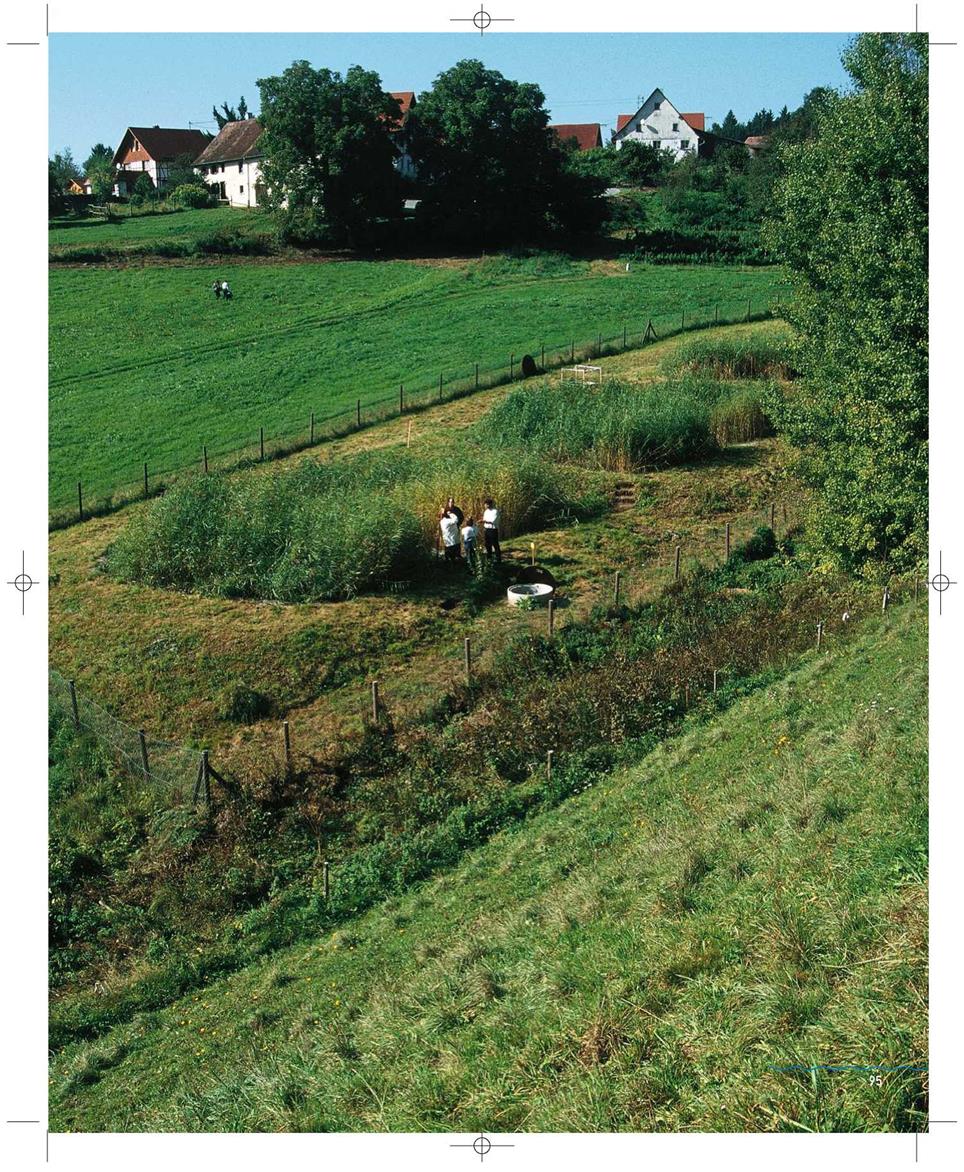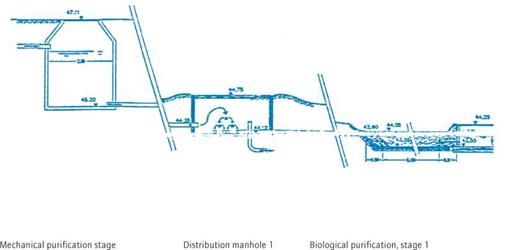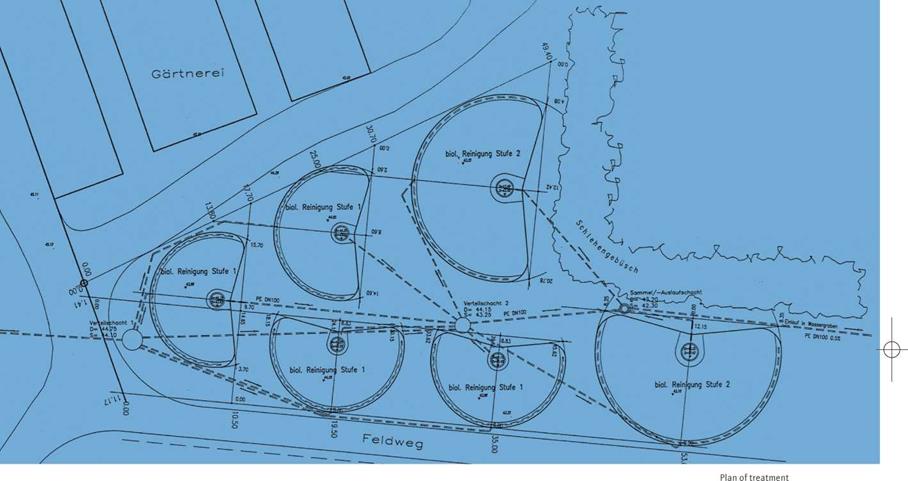|
Decentralized purification plants are particularly suitable for remote farms and hamlets in country areas. |
|
‘O’er seven stones the water flows, ’tis pure again, the farmer knows.’ This piece of agricultural wisdom may well no longer apply to the present day and the highly complex ways in which water is now polluted, but there is a grain of truth in it: water is able to purify itself. Nothing has changed here. But cities have long since had to say goodbye to giving sewage the time and space to purify itself. They have ultimately arrived at narrow-mesh sewerage networks and treatment plants, via the intermediate stage of evil-smelling sewage farms. This is a hygienic but very expensive method of getting rid of the daily quota of faeces. Since the early 1990s, country people have increasingly started to remember decentralized sewage treatment. An increasing number of farmers, but also private householders who have enough land, are letting their sewage flow not over seven stones, but through settling tanks and purification beds, so that it can then pass into an effluent tank having been cleaned. This also applies to the Hofgemeinschaft in Worme, an organic farm in Handeloh, south of Hamburg. The Dreiseitl studio planned a sewage treatment plant for about 30 people who live there plus holiday visitors and participants in educational projects. The planners took advantage of the natural slope on the site, and were thus able to do without technical units to a large extent. Thus sewage from the farm first flows into a 250 metre long collector tank and then into three shafts. Here a filter sack separates solid and liquid components. Alternate use of the shafts means that the contents of the filled bags can be pre-composted and used in fields and gardens after nine to fifteen months. The liquid part then flows into purification beds with an area of 7 square metres per resident equivalent. The botanical treatment plant is de- |
|
Fitting the sheet seal in a purification bed. Here laymen can help as well – a school class at work. |
|
Setting the manholes and introducing the filter substrate |
|
The decentralized treatment plant with purification beds treats all the sewage from the hamlet of Unterbach, which has 80 inhabitants. |
|
Installing the substrate for a purification bed layer by layer |
|
Planting the beds with aquatic plants (phragmitis) |
![]()

![]()

|
![]()
|
|||
|
|
||
|
|||
|
![]()


![]()

![]()

![]()
|


![]()
![]()
|




